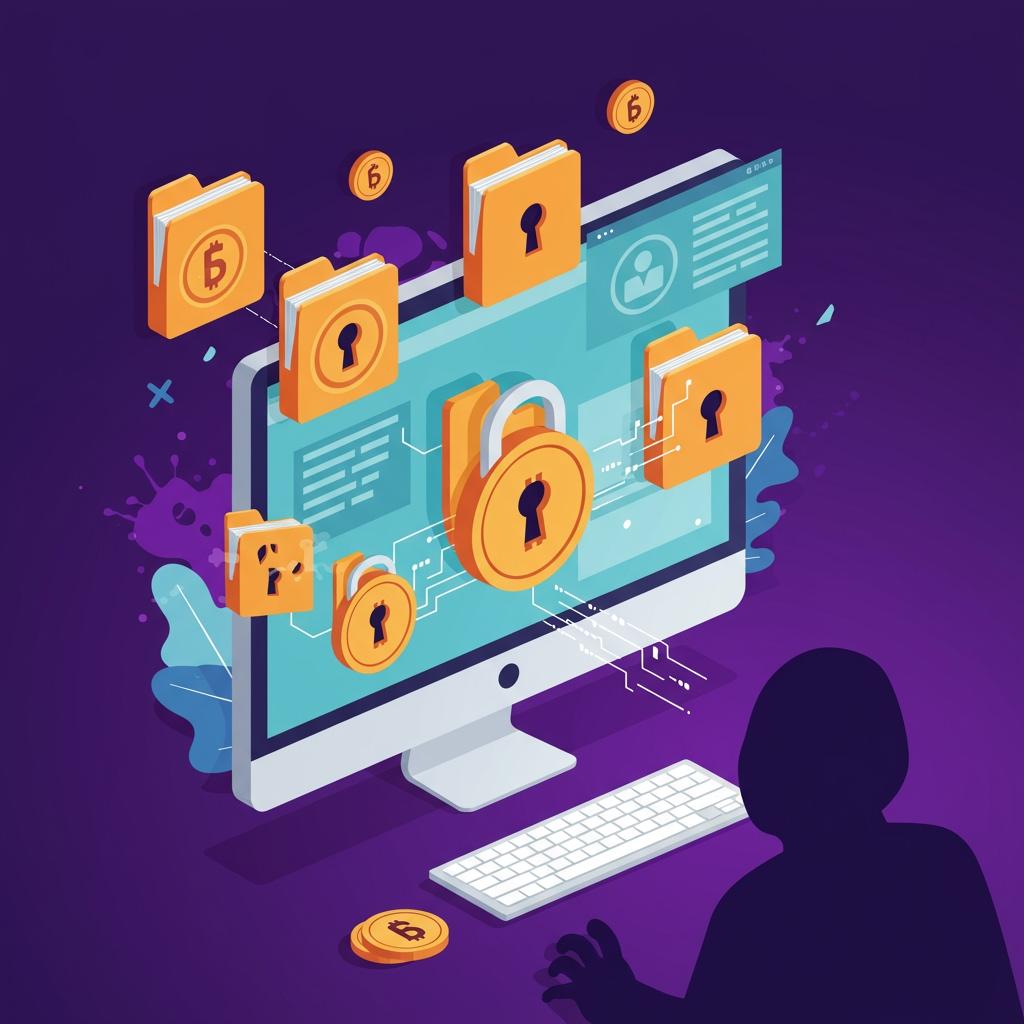How ransomware locks your files and demands money
 Ransomware encrypts your files and demands money to unlock them, acting like a digital kidnapper.
Ransomware encrypts your files and demands money to unlock them, acting like a digital kidnapper.
How Ransomware Locks Your Files and Demands Money
The sneaky cyber threat that locks your digital world
By Peter Teoh, Science Writer
Imagine waking up one day and finding your phone or computer telling you that all your photos, games, homework, and music are locked — and the only way to get them back is to pay a stranger. This is exactly what ransomware does, and it’s one of the most dangerous types of cyber attacks today. But how does it work? Let’s dive in!
What is Ransomware?
Ransomware is a kind of malicious software (or malware) that acts like a digital kidnapper. It sneaks into your device, locks your files, and then demands payment — usually in cryptocurrency like Bitcoin — to give you back access[1][3].
Step 1: How Does Ransomware Get Into Your Device?
Ransomware usually gets in when you click on something bad online: an email attachment that looks normal but isn’t, a shady link, or even a website that’s been hacked[3]. Once you accidentally open the door, the ransomware quietly installs itself.
Step 2: Locking Your Files with Encryption
Here’s the techy part made simple: ransomware doesn’t just hide your files; it scrambles them using a secret code called encryption[1]. Think of encryption like turning your files into unreadable gibberish — unless you have the special key to unlock them. The ransomware uses a key only the hacker controls.
It grabs important files on your device, changes them into this scrambled mess, and replaces the originals. It might even erase backup copies to make sure you can’t get your files back easily without paying up[1].
Step 3: The Ransom Demand
Once your files are locked, the ransomware shows a scary message — often as your desktop wallpaper or text files in your folders — telling you how much money you need to pay to get your files back[1][3]. This message usually includes instructions on how to send cryptocurrency, which is hard to trace.
If victims pay, the hackers sometimes send a special key that can decrypt the files, but there’s no guarantee. Paying also encourages criminals to keep doing this[1].
Why Is This a Big Deal?
Ransomware can lock everything from your school projects to business data. It can shut down hospitals, schools, and even entire companies, causing huge problems[3]. Plus, it can spread quickly across networks, locking many devices at once[1].
How Can You Protect Yourself?
- Don’t click suspicious links or attachments.
- Keep your software and antivirus updated.
- Back up your important files regularly to a separate device or cloud.
- Be careful where you download apps or files from.
Remember, being cautious is your best defense[3].
Stay Safe, Stay Smart
Ransomware is like a digital lock-and-key puzzle, but the key belongs to someone you don’t want to trust. While the tech behind it is fascinating, the risks are real — and paying the ransom isn’t a safe bet. By understanding how ransomware works and keeping your devices secure, you can keep your digital life locked down — the right way.
Side Notes
- Ransomware sometimes targets backups to make recovery harder.
- Some advanced ransomware spreads by scanning for weak spots in other devices.
- Cryptocurrency is often used because it’s harder to trace than regular money.
Trending Now
- Cybersecurity careers: How teens can become ethical hackers.
- The rise of AI in fighting cybercrime.
- Top 5 software tools every teen should know to stay safe online.
Stay curious and stay secure!